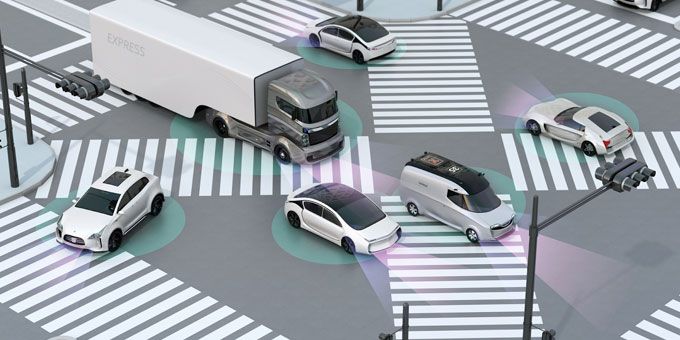The vision of fully driverless and connected traffic is just as exciting to some as it is worrisome to others: are self-driving cars safe enough without any human involvement?
 What People Really Think of Autonomous Cars
What People Really Think of Autonomous Cars

Contributed by | Giles Kirkland
Self-driving cars are no longer a fantasy or a far-fetched future concept. Google has been testing self-driving vehicles since 2009, and now other tech and automotive companies are joining the race towards introducing autonomous vehicles to our daily lives.
Naturally, the recent advancements in the sector of autonomous vehicles have prompted various kinds of reactions among road users, public entities and businesses. The vision of fully driverless and connected traffic is just as exciting to some as it is worrisome to others: are self-driving cars safe enough without any human involvement?
Ethical feasibility: The Trolley Problem
With the most advanced lasers, sensors, cutting-edge GPS and hi definition cameras, autonomous cars are technically feasible. In-car hardware and software is constantly improved. It’s also believed that driverless transportation can save the user an average of 50 minutes per day – minutes that can be spent making important calls, scheduling meetings, and much more. This shows that there are little to no doubts regarding their functionality.
However, many wonder if these cars will be able to make the same choices as humans have to make. Will they have a sense of ‘morality’ and if so, then what are their criteria?
For comparison we can take the trolley problem. A trolley is going down a track on it’s way to run over five tied-down people. If you divert it, it will turn and go down a track where only one person lies. The dilemma: what is the ethically correct option; not interfering, and letting the trolley take it’s planned course and allowing the death of five people or purposely going out of your way to change the course of the trolley to save five lives for the price of one?
This thought experiment, when transferred to autonomous cars, raises a chain of further questions. In a difficult situation, should a car act to save the maximum amount of lives possible or should it prioritize the lives of its passengers (owners probably)? A recent survey showed that 47% of people agree with the former and 50% are in favor of the latter argument. The remaining 3% think a vehicle should choose at random. Another question that follows is about the responsibility. Who is accountable for the accidents – the car, the driver, or maybe the manufacturer?
Different Demographics and their Opinions
Clearly there is a difference in approach to morality among different generations. 89% of baby boomers believe a car should prioritise its own passengers and that the user of the car is to be blamed in case of a crash. On the other hand, 51% of millennials think that the maximum number of people should be saved – compared to the 5% of boomers and 4.5% of gen x-ers.
Other social factors affecting people’s trust in autonomous cars are children and gender. People with fewer children were more in favor of these vehicles while those who have four or more children typically answered that they’d feel less confident on the roads with self-driving cars around. Moreover, 65% of male participants didn’t believe the cars could be “taught” ethics whereas the women were on a 50/50 divide.
Overall, 58% of the participants were of the opinion that driverless vehicles couldn’t be taught morality. Unsurprisingly, people employed in the IT sector were understandably more in favor than other professionals, with 60% having faith in the decision-making of AI.
Looking Ahead: How autonomous cars will affect our lives
Despite all concerns, we will soon be seeing more and more driverless cars driving around among us. Forbes predicts that over 1700 startups are looking to join the autonomous industry, and Toyota, Ford, Uber, Volvo, Tesla and other industry leaders are hard at work towards making level five automated cars a reality.
In April of 2019, Tesla driver Raghu Konka publicly shared a video where his self-driving car acted fast to avoid an unexpected and possibly fatal collision with a truck. According to Elon Musk, driving a car that is not automated will soon be equivalent to riding a horse to work - outdated.
The first thing to be affected by the full automation of cars will probably be the steering system, wheels, and pedals. Driving skills and licenses would no longer be required.
Children, the elderly, and sick – everyone is expected to travel with complete independence. With no room for human error, roads will be much safer and the automotive industry will turn into a tech-oriented sector where automation and robotics play the main role.
Although such changes will slowly be implemented with time, it’s worth realizing that we are already in the process of transitioning to a world where AI takes the wheel.
The content & opinions in this article are the author’s and do not necessarily represent the views of RoboticsTomorrow
Featured Product

